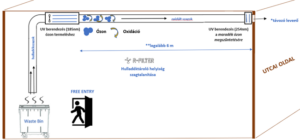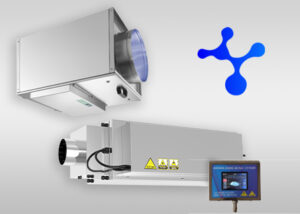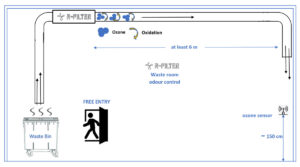
The metabolism of fresh fruit and vegetables continues even after harvesting. When they breathe, they not only produce carbon dioxide and water, but also ethylene (C₂H₄). Ethylene is a plant hormone in gaseous form. Its purpose is to regulate processes associated with ageing and ripening. When this gas accumulates, fruit and vegetables ripen faster, which ultimately leads to deterioration and shortened shelf life and can affect the flavour, texture and appearance of fruit and vegetables.
With our equipment, we recommend two methods for removing ethylene in fruit and vegetable storage rooms, depending on the conditions, ethylene removal by photocatalytic oxidation and VUV-photolysis. Photocatalytic oxidation (PCO = PhotoCatalytic Oxidation) is suitable for destroying volatile organic compounds such as ethylene:
UVT
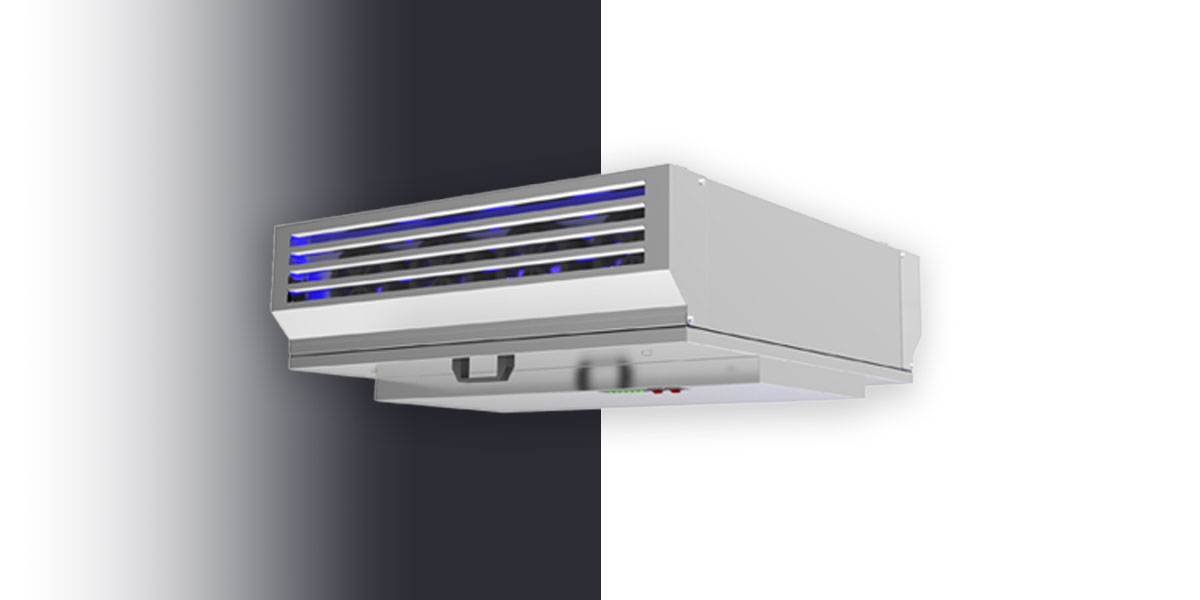
In our ceiling-mounted device for industrial use, we use UV light and a titanium dioxide-coated surface, i.e. a photocatalyst. We utilise the synergistic effect of UV-C light and TiO2 photocatalyst. Fans are installed to circulate the storage air through the device. The air is first exposed to disinfecting UV-C light, then continues to flow touching the photocatalyst that is activated by the ultraviolet radiation.

The above coating is a semiconductor and when light of a certain wavelength strikes the surface of the titanium dioxide, electrons (eˉ) are transferred from the valence band to the conduction band. At the same time, electron holes (h⁺) are formed in the valence band. The holes oxidize strongly, while the electrons have a strong reducing effect. From the water arise highly reactive hydroxyl radicals (·OH) and from the atmospheric oxygen reactive superoxide radicals (·O₂ˉ). As a result, the pollutants are decomposed. The ultraviolet rays change the DNA structure of microorganisms and cause their destruction. Microbes and organics will be mineralized to water and carbon dioxide.
The VUV- photolysis technique is also suitable for destroying volatile organic compounds, such as ethylene:
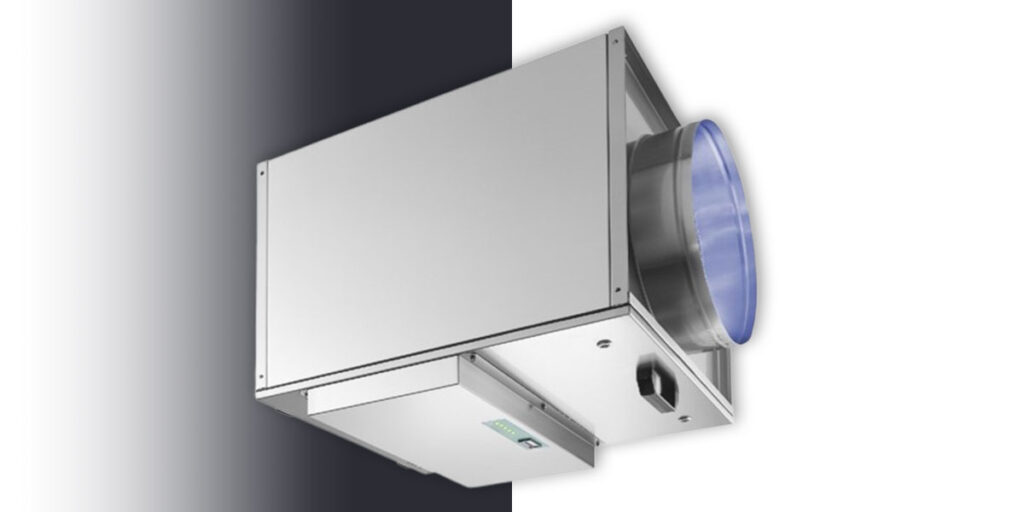
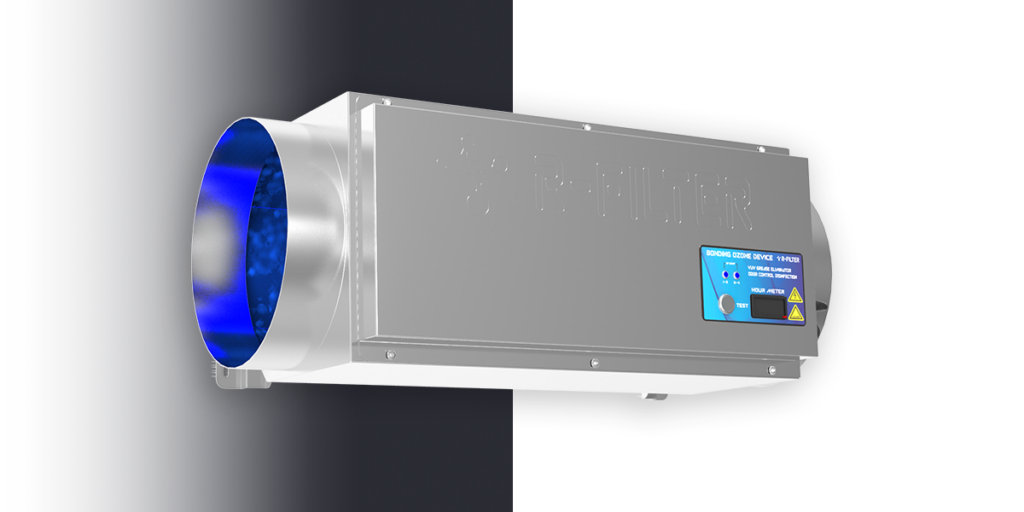
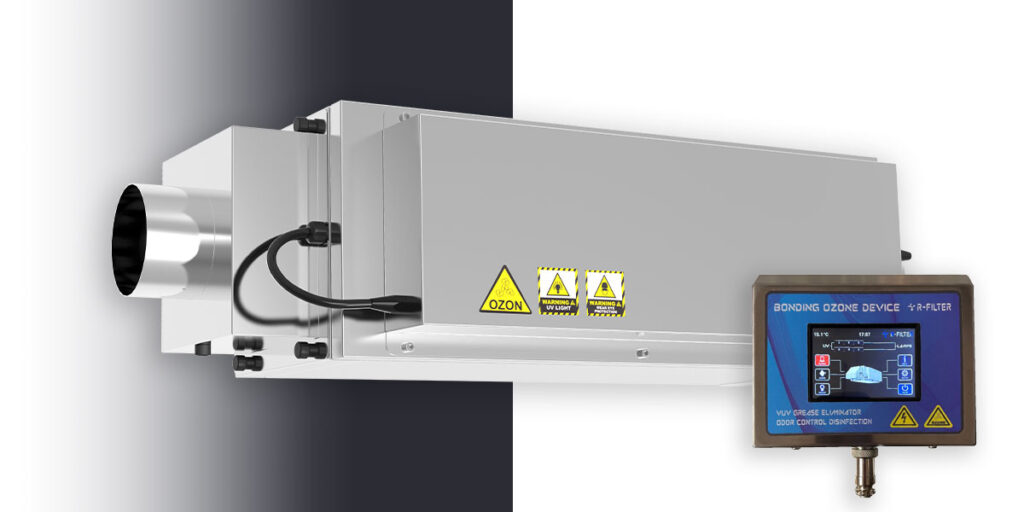
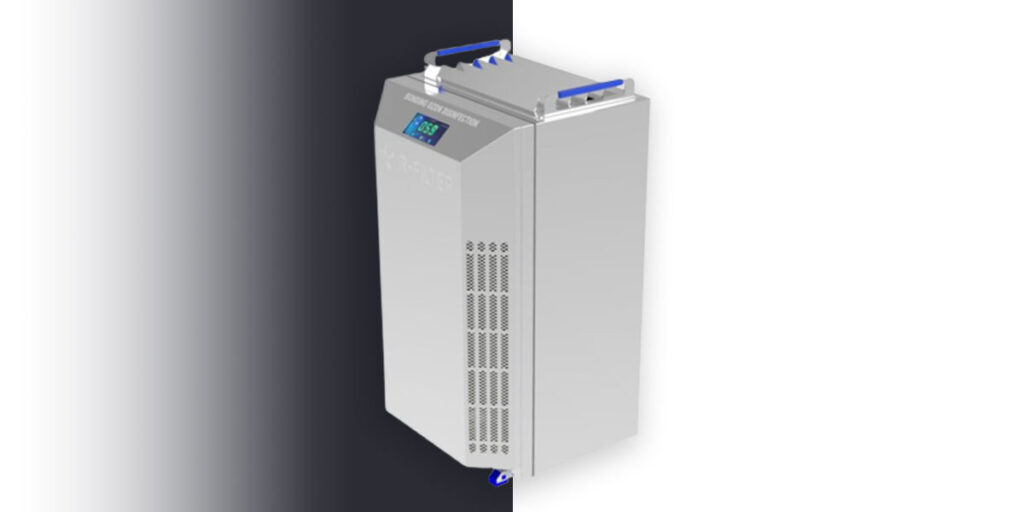
The VUV-lamps placed in the reactor chamber generate a large amount of ozone in the 185 nm range from the oxygen in the air. The ozone molecules emitted from the R-FILTER device reach the surface of the fruit and vegetables in the storage room and oxidise the ethylene, bacteria, fungi and mould.
As a result of ozone treatment, ethylene is oxidized to carbon dioxide and water:
C₂H₄ + 6O₃ → 2CO₂ + 2H₂O + 6O₂
The UVS and UVS-M devices generate ozone within the air duct that provides ventilation in the warehouse. The UVO-C devices introduce the ozone into the air duct from outside, which provides ventilation of the warehouse, or directly into the airspace of the warehouse, while the UVO mobile devices directly into the airspace. When a device creates ozone from the oxygen of the storage air, the 254 nm light from the UV lamps also has a devastating effect on bacteria, fungi and mold. Ozone smells pungent and chlorine-like. Its oxidising effect irritates the respiratory tract. Permissible workplace limit values for ozone in an international comparison:
- 0,1 ppm (0,2 mg/m³) for an 8-hour workday
- 0,2 ppm (0,4 mg/m³) max. for 15 minutes
The ozone concentration for breaking down ethylene depends on the size of the storage facility, the planned use and the type of fruit and vegetables. According to literature, it can even be effective between 0.1-0.3 ppm. Storage areas are typically areas with higher humidity. Ozone breaks down quickly in places with high humidity and must be quickly distributed throughout the area. With regard to ethylene removal, the following differences arise between the two methods described::
- The removal of ethylene during the VUV-photolysis treatment is much faster than PCO. This is because photocatalysis takes place mainly on the surface of the catalyst, while photolysis in the gas phase. As a result, VUV-photolysis results in faster and more efficient ethylene removal.
- In contrast to PCO, high relative humidity promotes the oxidation of ethylene in photolysis technology. Even in very low concentrations, ozone has a noticeable germicidal effect on microorganisms in the air, even at high humidity. Ozone sterilization is only effective when cells are sufficiently hydrated.
- Lower temperature impeded ethylene oxidation in photolysis technique only.
- Photolysis treatment is a process that requires great care. The permissible occupational exposure limits for ozone must be observed during treatment. The storage room must be ventilated after treatment. Safety instructions can be found in the operating instructions of the devices.
Reference: [1]: Efficacy of photocatalysis and photolysis systems for the removal of ethylene under different storage conditions Postharvest Biology and Technology, Volume147, 2019 Namrata Pathak, ……, Promod V. Mahajan

